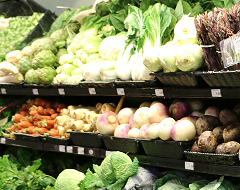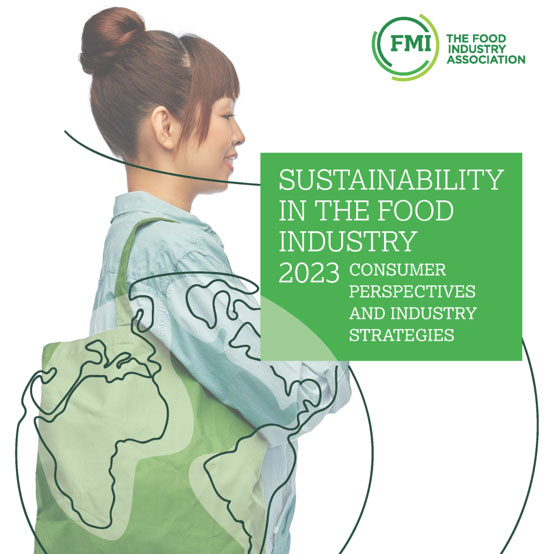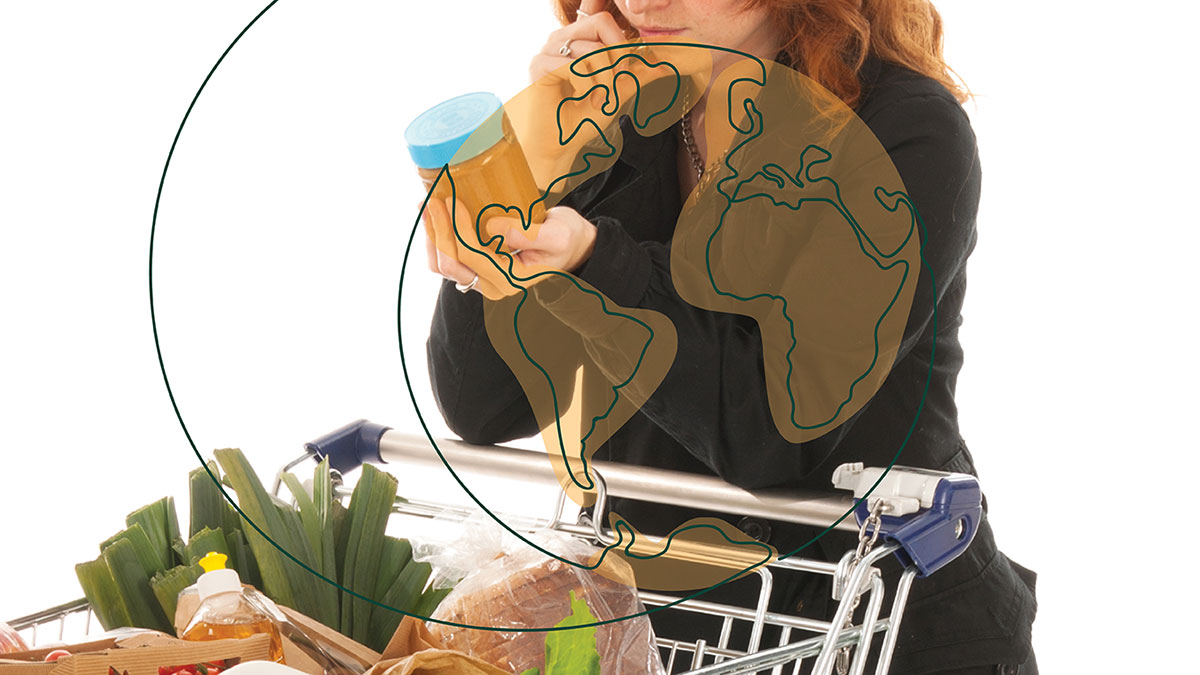By: Jeanne von Zastrow, Senior Director for Sustainability, Food Marketing Institute 
Have you seen the new movie Interstellar yet? Will we have to go to a different galaxy to feed the future? Not if we’re smart.
Lately, there is an incredible escalation of interest from individuals and all public sectors about how we will provide food security for the 9 billion people we’ll need to feed in by 2050. I’ve been on calls, webinars and running to meetings all over the country on sustainable agriculture, food security and food waste and in my mad dash from plane to plane, I’ve collected a potpourri of interesting tidbits to share.
What’s Keeping Us Up at Night?
Here are some of the facts I heard from recent events including the Washington Post Live Feeding the Future, and the World Wildlife Fund’s Fuller Symposium with National Geographic.
- We’ll have to double our food production and reduce food waste to feed the planet by 2050.
- Globally about one third of all food grown is lost or wasted.
- Seventy percent of all fresh water and 40 percent of the world’s land is used for agriculture now.
- Severe weather is here to stay, which means we need to rethink where and how food is grown.
- A paradox of obesity and hunger exists. Globally, over 800 million are hungry, yet obesity and related diseases are skyrocketing in developed countries.
- Food insecurity is global insecurity and food riots have occurred in 30 countries since 2008.
- As developing countries grow their middle class, demand for meat and seafood will skyrocket. Sadly, 100 developing countries have taken back public parklands for agricultural use.
Getting There Without Leaving the Galaxy
- Transforming Food Waste to Valuable Resources: Food retailers are working on food waste. Some are backhauling food waste to distribution centers or using in-store bins for sorting. Many are using anaerobic digestion to convert food waste to energy. The Food Waste Reduction Alliance recently developed a Best Practices and Emerging Solutions Toolkit with more examples.
- Drones Helping Agriculture: PrecisionHawk is a special high tech drone that can fly over large farms and communicate to chips embedded in the soil, plants and water to get a snapshot of how the farm is doing, and solutions to reduce pests and maximize production.
- Bugs as Food: Open ocean aquaculture is using meal worms rather than catching fish to feed fish.
- Customizable Urban Farming Solutions: Farming is going vertical, underground, and even making customizable greenhouses that can adapt to any climate.
- Millennial Mindsets: The give back generation of tech savvy entrepreneurs is working hard to create a sustainable supply chain. Millennials are over 40 percent of our Global Sustainability Summit audience, and are demonstrating incredible innovation around sustainability.
- Strange Bedfellows: There is a new age of collaboration between competitors, government and NGO’s like never before. Four retailers are combining their food waste into anaerobic digesters which provide electricity in Pennsylvania, and WWF is working with many companies on water foot printing and reductions. USDA has initiative the Food Waste Challenge and FMI, The Food Waste Reduction Alliance, and some of our members are founding partners. EPA has developed an extremely helpful tool called Waste Wise, which helps companies benchmark and reduce food waste.
While our sustainability worries might be great, the future is now and progress towards a more sustainable food supply means our galactic search might not be needed.


 Industry Topics address your specific area of expertise with resources, reports, events and more.
Industry Topics address your specific area of expertise with resources, reports, events and more.
 Our Research covers consumer behavior and retail operation benchmarks so you can make informed business decisions.
Our Research covers consumer behavior and retail operation benchmarks so you can make informed business decisions.
 Events and Education including online and in-person help you advance your food retail career.
Events and Education including online and in-person help you advance your food retail career.
 Food Safety training, resources and guidance that help you create a company food safety culture.
Food Safety training, resources and guidance that help you create a company food safety culture.
 Government Affairs work — federal and state — on the latest food industry policy, regulatory and legislative issues.
Government Affairs work — federal and state — on the latest food industry policy, regulatory and legislative issues.
 Get Involved. From industry awards to newsletters and committees, these resources help you take advantage of your membership.
Get Involved. From industry awards to newsletters and committees, these resources help you take advantage of your membership.
 Best practices, guidance documents, infographics, signage and more for the food industry on the COVID-19 pandemic.
Best practices, guidance documents, infographics, signage and more for the food industry on the COVID-19 pandemic.
